April 13, 2025 | 19:26 GMT +7
April 13, 2025 | 19:26 GMT +7
Hotline: 0913.378.918
April 13, 2025 | 19:26 GMT +7
Hotline: 0913.378.918
From October 2024, the Institute of Agricultural Environment and the Global Wetland Centre - University of Copenhagen (Denmark) will implement the project "Establishing field measurement methods for modeling, calculating, and forecasting greenhouse gas emissions in rice cultivation in Vietnam" in Phu Luong commune, Dong Hung district, Thai Binh province.
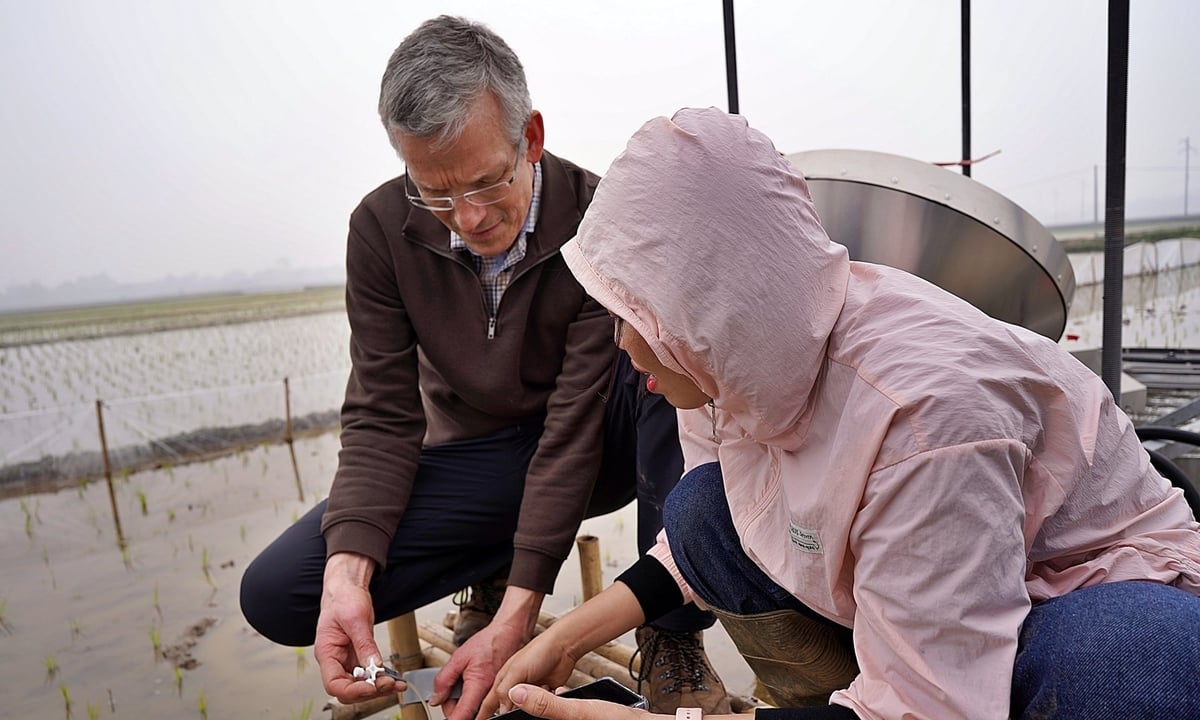
Professor Bo Elberling (left) from the Global Wetland Centre checks the operation of emission measuring devices in the rice field. Photo: Bao Thang.
Over the course of two years, the project aims to measure and analyse the exchange of greenhouse gases, including CO₂, CH₄, and N₂O, between the soil surface and the atmosphere, thereby assessing the impact of agricultural activities on the environment.
The research team conducts measurements during both rice cropping seasons (spring and autumn) and the winter season (fallow land). This approach allows for estimating the total greenhouse gas emissions each year. From this, a comprehensive assessment can be made regarding the level of greenhouse gas emissions in each season as well as the different stages of the cultivation process.
In Vietnam, there have been some studies measuring greenhouse gas emissions in rice cultivation. However, most of these have been conducted manually, or only during certain stages of the cultivation process, such as when draining water from the fields.
The project by the Institute of Agricultural Environment and the Global Wetland Centre differs in that all measurements are automated in real-time. At any given moment, users have access to the data and can know the exact emissions of each type of greenhouse gas.
This automated system consists of two main components. The first is a container housing the gas analysis equipment. The role of this container is to collect, analyse, and store greenhouse gas data from the automatic measuring chambers positioned across the fields.

A sensor for measuring emission levels. Photo: Bao Thang.
About several dozen metres from the container, there are six automatic gas measurement chambers placed on the field, arranged in two rows. One row measures emissions from the bare soil (without rice in the chamber), while the other row contains rice in the chamber.
At each designated measurement time (approximately every 15 minutes), the sampling chamber automatically closes, and the pump extracts all the air inside, transferring it to the analyser located in the container. The process of measuring the concentrations of CO₂, CH₄, and N₂O is entirely automated.
Once the sampling is complete, the chamber automatically opens, and the sampling moves to the next chamber in the row.
To assist with analysing fluctuations in greenhouse gases during the study, a meteorological station is installed at the experimental field. The purpose of this station is to measure factors such as temperature, humidity, wind speed, etc., to analyse and provide a comprehensive view of greenhouse gases and any changes (if any) throughout the project's duration.
All data from the measurements will be recorded and stored on a data logger, ensuring continuous monitoring and analysis.
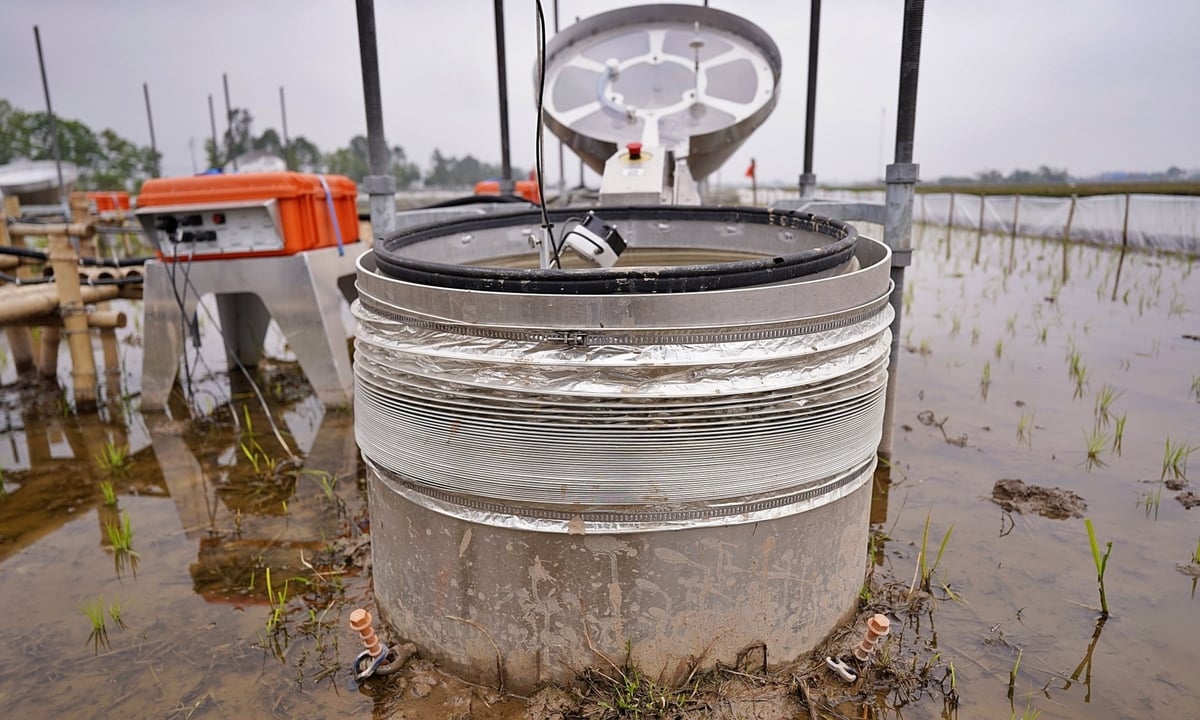
A chamber with its lid open. It will automatically close after approximately 15 minutes according to the set schedule to measure the emissions from the soil. Photo: Bao Thang.
Professor Bo Elberling (Global Wetland Centre) stated that the results of the project will help develop specific guidelines for farmers to optimise crop yield, quality, irrigation, and fertilisers, while maintaining and improving soil organic matter and reducing greenhouse gas emissions.
Although covering only a small portion of the Earth's surface, wetlands (including rice-growing areas) are a "hotspot" for the absorption and release of greenhouse gases. In the past few centuries, wetlands have tended to shrink or be converted into agricultural land, leading to the release of some of the carbon stored in the soil as CO₂. Re-flooding these areas may reduce CO₂ emissions but could potentially increase CH₄ and N₂O emissions.
The Global Wetland Centre plans to design new approaches for modelling and forecasting the greenhouse gas emissions potential of wetlands (including rice fields) in order to contribute to humanity's carbon neutrality goal.
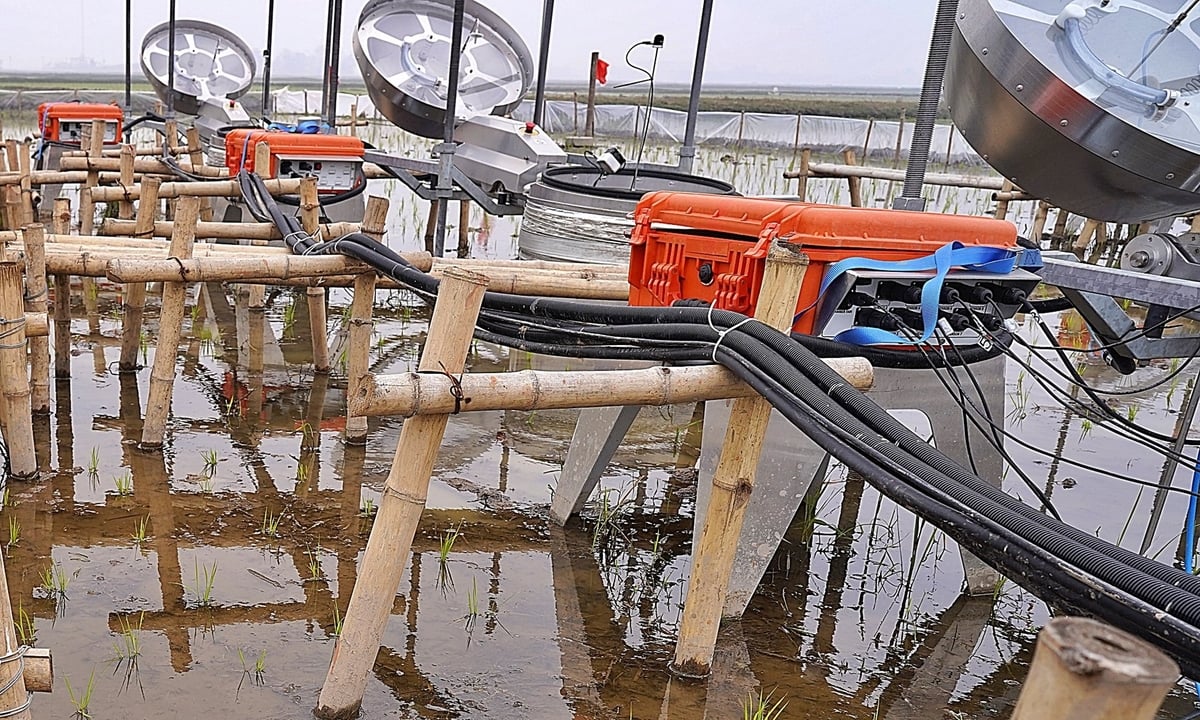
The project's measurement equipment system will record results over a period of 2 years, providing advice to more accurately calculate emissions in rice cultivation. Photo: Bao Thang.
According to Associate Professor Mai Van Trinh, Director of the Institute of Agricultural Environment, greenhouse gas emissions from agricultural production have become a global issue. In agricultural countries like Vietnam, agricultural production is not only severely affected by climate change but also directly contributes to climate change by emitting CH₄.
Rice production emits about half of the greenhouse gases in agriculture. Therefore, any technology that can measure CH₄ emissions from rice fields has the potential to identify measures to reduce emissions. This is because the three greenhouse gases emitted from agricultural activities—CO₂, CH₄, and N₂O—are all products of the carbon and nitrogen biogeochemical cycles within the ecosystem.
To date, Vietnam has conducted six national greenhouse gas inventories in the years 1994, 2000, 2010, 2013, 2014, 2016, 2018, and 2020. Most of these greenhouse gas inventory calculations have used the IPCC Tier 1 emission factors, without employing specific country-level factors (Tier 2 and above).
Translated by Huong Giang

(VAN) The results from pilot fields are catalyzing the expansion of the One million hectares of high-quality, low-emission rice project in Kien Giang.
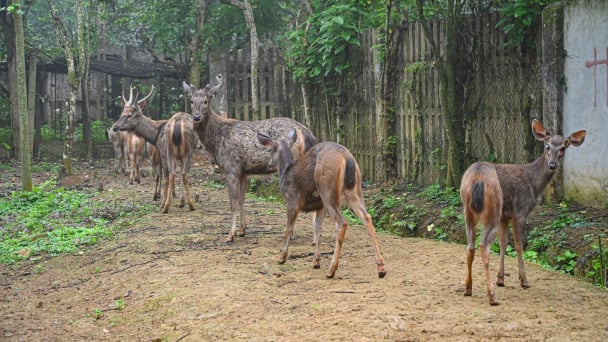
(VAN) On the morning of April 11, Cuc Phuong National Park received 18 individuals of endangered and rare wild animals from Da Nang city.
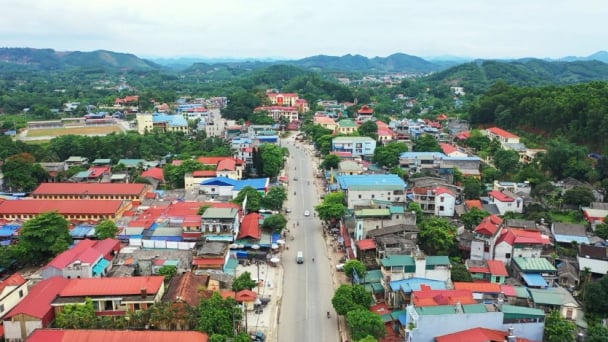
(VAN) FAO supports Vietnam in enhancing survey sampling techniques for the 2025 nationwide agricultural and rural census.
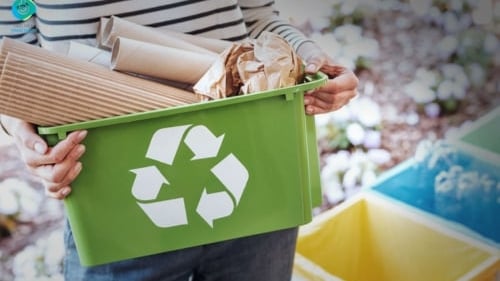
(VAN) By participating in the green transition, manufacturers become an indispensable part of the circular economy, contributing to resource optimization and environmental protection.

(VAN) The One Million Hectares of High-Quality and Low-Emission Rice Program can generate nearly 14 million tons of straw annually, posing an urgent requirement to diversify straw-based products.
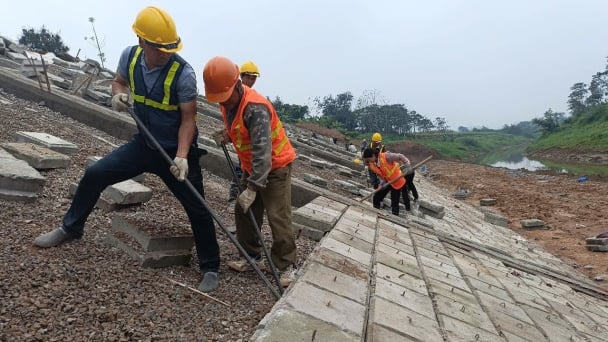
(VAN) This figure was recently announced at a conference held in Yen Bai, focusing on climate-resilient infrastructure development for ethnic minority regions.
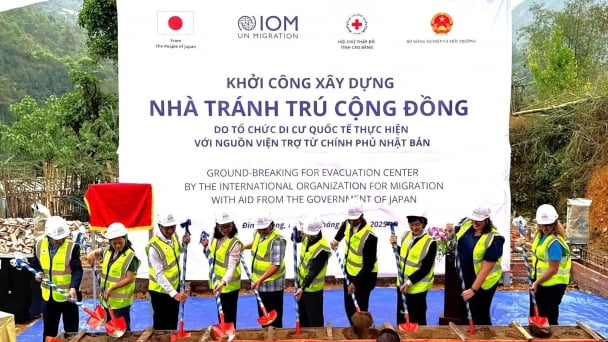
(VAN) The evacuation center is a practical work in efforts to respond to natural disasters and adapt to climate change in vulnerable areas.